FAQ: How do I know what size to order, what type? How to measure?
The most effective and important safety measure a motorcyclist can invest in is the helmet. No other single piece of motorcycle gear provides more protection, or more return on investment, in the event of a crash. This explains
why a motorcycle helmet should not be bought based on the price or appearance. A rider should buy the best fitting, most highly rated helmet he or she can afford.
Buying a helmet requires a bit of research to understand the different shapes and how to buy the best fit. In this motorcycle helmet sizing guide we cover the following essential
aspects to choosing the correct motorcycle helmet:
- Shape
The most important helmet fitting aspect to consider before determining helmet size is helmet shape. The shape of the rider's head plays a crucial role in selecting a proper fitting motorcycle helmet. All helmet manufacturers design their lids to fit a specific head shape. These often range across three primary designations - long oval, intermediate oval, and round oval. Long Oval - Shaped for a head which is longer front-to-back (from forehead to the back of the skull) than it is side-to-side (ear to ear).Intermediate Oval - Shaped for a head which is slightly longer front-to-back than it is side-to-side. Most motorcycle helmets will fall into this category as it is the most common head shape; if a helmet does not state its shape, this is usually it. Round Oval - Shaped for a head which has almost identical front-to-back and side-to-side measurements. Once the head shape is determined, it is easier to filter the enormous selection of available motorcycle helmets down to a smaller, more appropriate list of those which will fit the rider's head. Now it is time to find the correct size of the motorcycle helmet.
- Sizing a Motorcycle Helmet
Measuring for motorcycle helmet size is as simple as looking for a good fitted hat. The difference is in how the helmet fits over the rider's head. The best tool for this is a seamstress or tailor's tape measure. It is flexible enough to wrap around the rider's skull and marked in useful increments for determining an accurate size. Use it to find which size of helmet suits you: Wrap the measuring tape around the fullest part of the head - this will be just above the ears and about a half-inch above the eyebrows for most - and take the measurement at the forehead. To get the most accurate measure, have a friend help with this step. Take the measurement and compare to the size chart on the page for the desired motorcycle helmet (you might have to scroll down). Each manufacturer has sizing which is specific to its own models, so only rely on the size chart produced for the motorcycle helmet being considered. Some variance occurs, even between different models from the same manufacturer, which is why MotoSport offers a "Free First Exchange" program if your helmet does not fit properly.
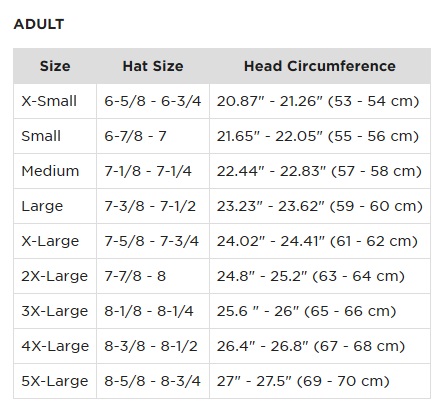
- Helmet Fit
When a new helmet is first worn, it should actually be slightly tight, with the interior coming into contact with most of the head, but not so restrictive that it causes any pain. There should be no "hot spots" - places where the helmet's interior puts pressure on specific points of the skull or face - but it should not move around freely. With time, a helmet adjusts to match the shape of the rider's head as it is worn, "breaks-in" and loosens a little. However, it should never become loose enough to easily turn from side to side.
Put the helmet on - it should be a little tight as it goes on over the head. The helmet should sit on the head evenly with the eye port's upper edge just above the eyebrows and offer good peripheral vision to see side-to-side. Put a finger between the helmet interior and the head. If it easily fits, try a smaller size. Some helmet models allow a change in the cheek pads for better fitment, so consider this when checking for proper sizing.
- Types of Motorcycle Helmets
Motorcycle helmets come in different types, or styles, each offering certain benefits to address a rider's needs. Some riders like full all-around protection while others prefer a slim approach that mostly allows them to ride legally
in those states that have helmet laws. Regardless, you have many options to choose from:
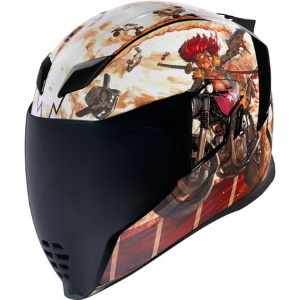
The full face helmet, on the other hand, totally encloses the rider’s head. A face shield protects the rider’s nose and eyes, and an extension of the shell called the chinbar covers the bottom of the rider’s face. Full face
helmets are the least ventilated, but the most protective against impacts and the elements. They’re also the quietest helmets available. A full face helmet is the only option if you aspire to take your helmet to the track.
Full face helmets are common around every kind of street bike.
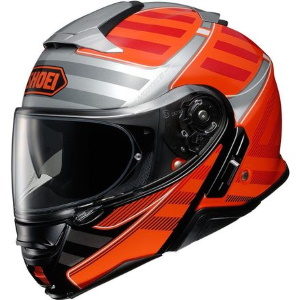
The full face helmet, on the other hand, totally encloses the rider’s head. A face shield protects the rider’s nose and eyes, and an extension of the shell called the chinbar covers the bottom of the rider’s face. Full face helmets
are the least ventilated, but the most protective against impacts and the elements. They’re also the quietest helmets available. A full face helmet is the only option if you aspire to take your helmet to the track. Full face
helmets are common around every kind of street bike.


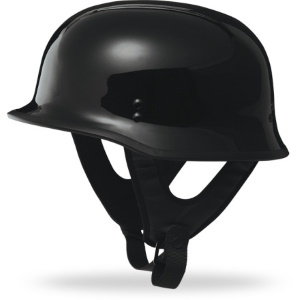
First is the open face helmet, which is the least restrictive and least protective. Open face helmets flow tons of air, since the helmet’s shell does not cover the rider’s chin or face, hence the name. An open face helmet could
be a “half” helmet, which just covers the top of your skull, or a “three-quarter” helmet, which covers everything except the rider’s face. Open face helmets tend to be less expensive than other types of helmets, and they’re
usually short on features as well. You’ll typically see these helmets worn by riders on cruisers, retros, and classics

If your rides take you on- and off-road, consider an ADV, or adventure, helmet. ADV riders transition from the street to the trail in a single ride, so their helmets combine features for both disciplines. On the street, an
ADV helmet offers a face shield and a street-legal safety rating. For riding in the dirt, they mimic a dirt helmet with a peak (like the bill on a cap over the eyes), lots of ventilation, and compatibility for goggles.
Of course, their hybrid nature makes for some compromises, but there’s no better choice if your adventures incorporate both street and trail. ADV helmets are most at home with dual-sport and ADV riders.
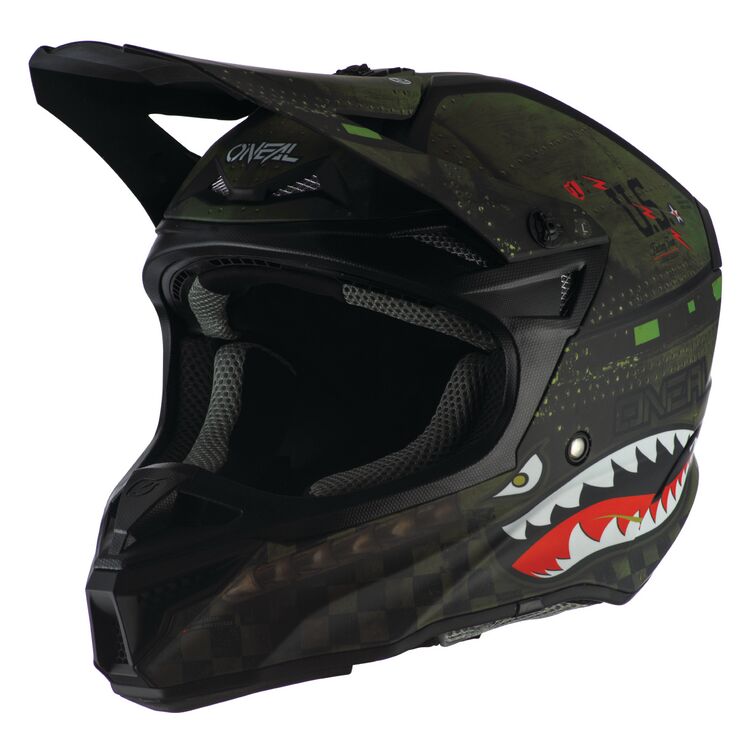
Finally, there’s the dirt helmet, made exclusively for off-road riding. Note that these helmets do not require a Department of Transportation (DOT) rating, so they might not be street-legal. Dirt helmets feature plenty of airflow,
plus a large peak to keep roost out of the rider’s eyes. They’re intended to be worn with goggles. (Goggles are almost always sold separately.) They’re exceptionally light, though they sacrifice face shields and other comforts
to make that possible. A dirt helmet is designed for off-road riding, so if you’re going to be riding on the street, it's recommended that you choose something else.
Wear the helmet a while to see if any pressure points develop. If the helmet causes a pressure point that's uncomfortable after 15 minutes, it will be surprisingly painful after a three-hour ride.
But first, it's important to know a little about safety ratings. All helmets approved for use in the United States come with Department of Transportation (DOT) rating. Other safety ratings include Snell and the Economic Commission
for Europe (ECE). Snell and ECE tend to have more rigorous testing but that doesn't mean a DOT-only approved helmet is any less safe for highway travel. You can read more about safety ratings by reading The Big List of DOT, Snell & ECE Approved Motocross Helmets.
Determine your head shape and size
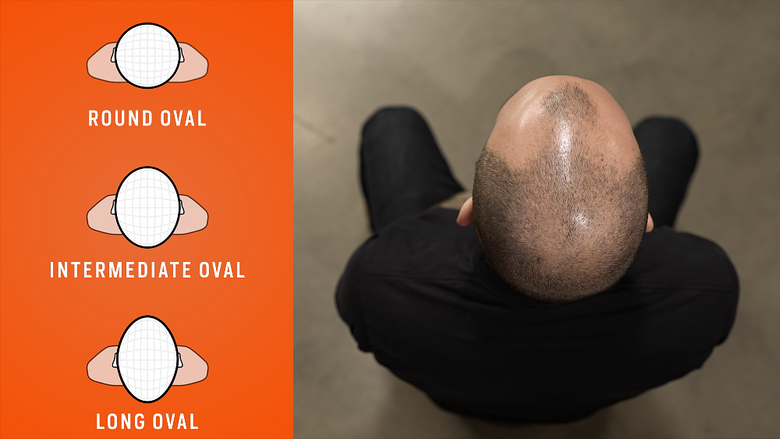
- Hopefully, one of the helmet categories sounds right for you. Now that you have a direction, it’s time to figure out your head shape. People generally fit into one of three head shapes: long oval, intermediate oval, and round oval. To find out what you’ve got, ask a friend to take a photo of your head from above. Flatten your hair down as much as possible, because it can obscure your head’s shape. Looking at the picture, is your head almost round (round oval), or is it long and thin (long oval)? Somewhere in between (intermediate oval)? In the United States, intermediate oval is the most common, but check to be sure before moving on to sizing.
Our friendly Gear Geeks get calls all the time about helmet fitment. Here are a few of the most frequent issues.
- “My ears get folded over when I put my helmet on.” That’s normal. Watch a MotoGP race and you’ll even see the pros adjusting their ears as they gear up. As long as you can push your ears back to a natural position and your ears do not hurt, you’re good to go. Again, it’s all about how the helmet fits once it’s actually in position “My ears get folded over when I put my helmet on.” That’s normal. Watch a MotoGP race and you’ll even see the pros adjusting their ears as they gear up. As long as you can push your ears back to a natural position and your ears do not hurt, you’re good to go. Again, it’s all about how the helmet fits once it’s actually in position
- “I really can’t figure out my head shape.” Did you actually get a friend to help you get that bird’s-eye view of your head? Also, did you actually flatten your hair as much as possible? That should be all it takes. If you really can’t figure it out, intermediate oval is probably your best bet.
- "I wear glasses or sunglasses when I ride. Does that change what helmet I order?" Probably not! Most helmets these days have some sort of accommodation for eyeglasses. If you wear glasses when you ride, try them when you test fit. Don’t size up if everything fits perfectly except your glasses. Consider another model helmet, a different pair of glasses, or contact lenses. If those glasses are just for blocking the sun, a drop-down sun shield might be a good solution for you.
- “I can’t even get my head into the helmet, even though the chart said this was my size!” That might actually be your size. Some helmets have more neckroll cushioning than others. Hold the helmet by the two straps, with your thumbs pressing the straps against the helmet. Gently spread the helmet’s opening a little, then try pulling it over your head. If it still doesn’t fit, don’t force it. Stop and try the next size up.
- "I think my helmet is too tight." If you can’t put it on, at all, then that’s obviously too tight. If you can get it on, but it hurts where it presses against your head, that’s also too tight. If it’s snug all around, too snug to chew gum, that’s about right. Don’t forget about that 15 percent to 20 percent break-in that will occur.
- "I think my helmet is too loose." If you can’t pass the “chipmunk cheeks” and chin bar tests (see step four above), you’re correct.
- "I heard I can get different pads for my helmet, or modify the pads I have to get the fit I want. What’s up with that?" It’s true, you can dial in the fit by altering the comfort pads inside your helmet. Not all helmets offer this feature. If your helmet is almost perfect, even after the break-in period, you can make slight adjustments with different pads and liners. The pad size is usually marked on the back, so you’ll have to remove them to see what you’ve got. Some helmet manufacturers, like Arai, pre-cut their cheekpads so you can peel layers off to buy clearance.
Vestibulum ante ipsum primis in faucibus orci luctus et ultrices posuere cubilia Curae. Suspendisse vel placerat ligula. Vivamus ac sem lac. Ut vehicula rhoncus elementum. Etiam quis tristique lectus. Aliquam in arcu eget velit pulvinar dictum vel in justo.

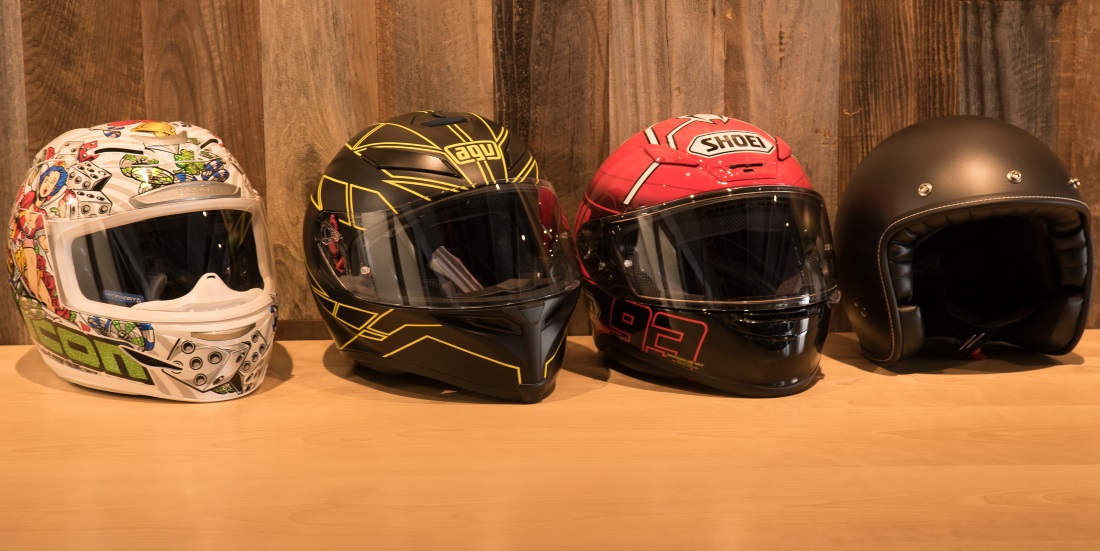
.webp?h=da7de074b63b70ecbeb15d2088bb90e2)
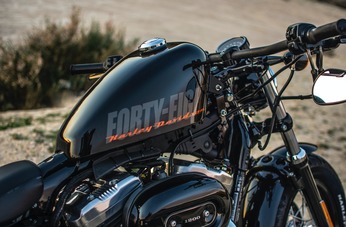
.webp?h=1f209b1eb8089a8e043394989aa42268)